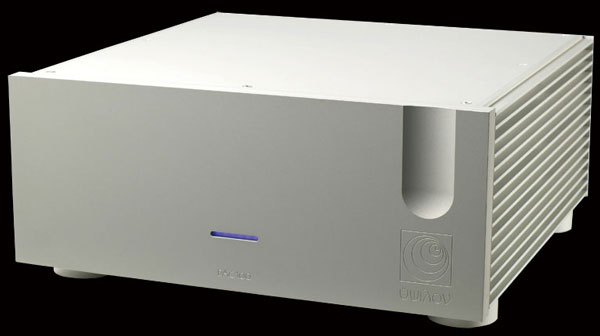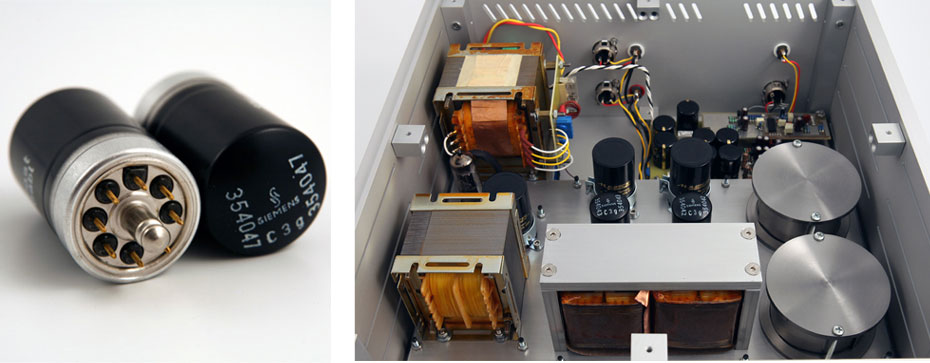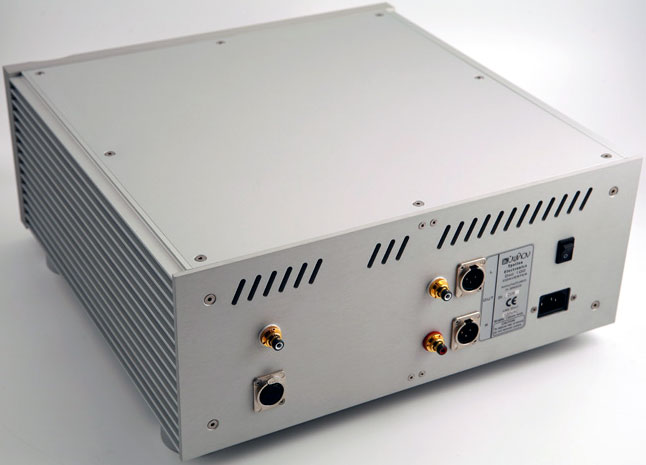My interest in the Ypsilon DAC 100 from Greece stemmed from several factors. First, its primary technological makeup was very similar to that of the $49k Audio Note UK’s DAC5 Special, my reference for over seven years. For instance, the Greek DAC uses the 24-bit Burr Brown PCM1704K, a chipset from the late 90s and not the latest, 32-bit designs, while the DAC5 Special uses the Analog Device AD1865, which is also from the 90s. Secondly, neither DAC has oversampling or upsampling processing. Thirdly, all major components of the Greek DAC are manufactured to such high standards as seen only in very few products, such as the DAC5 Special. Lastly, contrasting most digital companies in their use of the most sophisticated and advanced chipsets for the highest available computational power, in removing noise and artificiality from the converted signal, both Audio Note UK and now Ypsilon make heavy use of multiple transformers to perform the electrical filtration process, one that when implemented carefully and correctly is supposedly more benign to the signal than digital processing. Lastly, both DACs aim at reproducing the highest level of fidelity by providing the most electrically pristine environment for the older but musically renowned DAC chipset to operate in, albeit at much lower processing power.
This involved the use of tightest-spec’d parts that cost as much as an entire machine of many makes, and considerably more than what most companies would use. For instance, inside the Ypsilon DAC 100 is the lone circuit board, the epoxy type and plated in silver-tin, housing the twin DAC chips and the SPDIF receiver with double-thickness copper traces, which reinforces dielectrics between traces on board supposedly. Ypsilon is of the opinion that all dielectrics induce coloration, and the silver-tin plating yields the purest sound. Furthermore, the DAC and receiver chips are Surface Mounted Device (SMD) components, mounted by hand with silver solder. No silk screen layer is used. Parts for the analog stage are mounted in an aluminum sub-chassis, hardwired with in-house manufactured pure silver wire. Four Siemens C3g NOS metallic-can tubes provided for the single-ended class A transformer-coupled analog stage.
Construction-wise, I have never seen anything like the Ypsilon DAC, for the entire enclosure of the unit was constructed of thickly milled aluminum, supposedly shielding the innards from the external environment. There was no ventilation on the top but at the back, and the aluminum chassis did feel more than just warm to the touch. At the factory, it takes three to four days for completion of the assembly of the heavier parts, such as the power supply transformer, power supply choke, output and input transformer.
The Ypsilon featured only a single SPDIF as digital input, which worked flawlessly with the PiTracer via the Aural Symphonics Echelon Digital ($1,200, 1.3m) coaxial cable. The DAC also saw action with laptop iTunes™ music files via the Lindemann USB-DCC 24/96 (previously $650, now $495) digital-to-digital converter, again connected to the DAC via the Aural Symphonics cable. Connecting the laptop to the Lindemann was a 5-meter run of the Aqvox USB HighEnd Audiocable (EUR 159). After having been using the Lindemann for more than six months now, I am of the opinion that unless one is willing to spend serious money on a reference CD transport, using the Lindemann USB converter in conjunction with Apple™’s iTunes on a laptop is the most economic way to enjoy quality digital, regardless of the caliber of your DAC.
Complimenting this digital front-end was the pair of Rockport Technologies Mira Grand II loudspeaker system ($35,500/pair), driven by the 200-pound Win Analog S-series 833-equipped 100-watt monoblocks ($75,000/pair) and the accompanying Z845 preamplifier ($45,000). Two pairs of MIT Oracle V1.3 Proline interconnects ($9,399 per pair) and a pair of the Oracle V1.3 Wide speaker cable ($27,799 per pair) completed the system.
For me, it would also seem that the lure of high-resolution formats had run its course after spending time with the Ypsilon. I had missed the considerable dynamic scaling and vast harmonic richness of the $26,000 Accuphase DP-700 that I reviewed in March of this year, a trait all the more prevalent in its SACD playback. The PiTracer/DAC 100 system cured me of it, albeit at a much costlier $59,000. Using the same Telarc SACD sampler I used in the Accuphase review, this time via only the redbook layer, I was once again privy to a rare portrayal of massive dynamics and recreation of deep tonalities. But that was just the tip of the iceberg.
The sound of the Ypsilon was easy to grow accustomed to unnervingly, an experience not completely similar to listening to the Audio Note UK DAC5 Special, and the wealth of resolution from the Ypsilon was unprecedented. The British DAC had an easiness to its sound, while the Greek DAC had an allure that drew you in. Its rendition of the Steinway piano in the RCA Victor 20-bit recorded and mastered CD, Chopin’s 24 Prelude, for example, was the most satisfying to date, portraying a three-dimensionally concise image of the instrument, and I remained transfixed on the Ypsilon’s translucent depiction of the tone of the instrument. I normally jump tracks to listen to the individual numbers, but the Ypsilon’s portrayal of the recording compelled me to listen through the entire 24 pieces and more. It was not just the music and the psychological and intellectual nourishment that it provided which we all crave for, it was the concordant beauty of tone that held me captive. Whereas one always gives up certain aspects of sound for the others in every component choice he makes, for the first time, I can have extreme audiophile parameters fulfilled and yet not giving up that intangible and elusive living sound. The Ypsilon has shown me that music listening through a high-end audio system is not just about realism, it can also be about ravishing inside music itself.
I am also compelled to pester you, our readers, on the other performance parameters, such as how the soundstage became deeper and more hollow amidst the Ypsilon’s shocking feat of stacking layers upon layers of details. In the midst of this was the ambience. The airy ambience! It was like a DSD-upsampled redbook signal further cleaned up, exponentially extrapolated bit by bit, and each resultant shred of data re-sampled by another megabytes of order. All this without the benefit of third-party re-clocking devices. The machine did not know any better but to function in accordance to its design; yet when I listen to such performance I hear so much more my brain just places the main instrument to the front and moves the accompanying groups behind it, and it was magical. This DAC’s extraction of minute details against the vast sonic landscape was unbelievable. There was so much detail being propelled against an unrelenting flow of music, I was smiling and nodding during many a listening session.
The quadruplet of Siemens C3g NOS metallic-can at the Ypsilon’s analog stage played a significant role obviously, but I heard glare-free, pristine tonalities and texturing of such finesse that I thought was unattainable from all but the best solid-state SACD machines. For my experience told me that tube DACs would sacrifice that tiny teeney amount of ultimate definition so as to rid itself of the listening fatigue-inducing digititus. Yet, there it was, communicating an engaging realism I have not heard from any other DAC, solid-state or tube. In this regard, the Ypsilon was on par with the $40,000 Audio UK DAC5 Special, and then some.
The Ypsilon’s extraction of resolution from signals handed over by the PiTracer was spectacular, but only when also appreciated alongside its seemingly unlimited dynamic contrasting. In this area, I am now more alert than the past of the reality that all DACs are not created equally, and that is manifested repeatedly in how they handled the fortissimos of pianos, most notably in the degree of dynamic truncation manifested. I hadn’t realized this phenomenon until the Ypsilon displayed its prowess. The Rockport speakers provided firsthand testimonials on the immensely satisfying dynamic fullness of the Ypsilon’s recreation of the Steinway piano, prompting a realization in me that I was hearing such complete musical presentation for the first time. SACDs were surely known for a more encompassing in the area of dynamic contrasting as well, but the machines were compromised in the relatively cost-conscious applications of internal components, which represented severe injustice to the format. The supremely resourceful corporate conglomerates’ decision to adopt the solid-state architecture is to be respected, for it allowed for a more viable scenario of widespread adoption of the format. But it is also indicative of the continuously escalating costs of producing a superior tube SACD DAC, one that is not hindered by the less exacting tube sonics compounded by suboptimal component matching know-how. In a word, there is nothing like the Ypsilon, until we talk about the much more expensive Audio Note UK DAC5 Signature.
Likewise in its handling of the pipe organ in the LIM K2HD disc of the audiophile classic, Cantate Domino, the voluminous cathedral ambience rushed to my very self in the listening space amidst the immersive choir. The DAC’s definition of dimensionalities and separation of bodies were beyond first-class, a true masterpiece of electronic engineering that infused the strengths of tube circuitry and averted the fuzziness. 100+ piece orchestral pieces, such as the big and bold Bruckner No. 9 from a remastered Bruno Walter Sony Classics, carried a weight and immediacy that imparted authority to the reading sans sonic sluggishness, another testimonial to the pseudo intelligence of the machine. Many of my favorite CDs are from the 80s and 90s, and what had been disappointing sonics via other DACs has turned out to be refreshing through the Ypsilon. It was as if the signals went through a DSD-remastering process inside the Ypsilon.
What the Ypsilon accorded was not enhanced effects and flavors from powerful computational algorithms, but more developed and extended reconstitution of the human vocalization, sounds of instruments and ambience of the venue. Whereas I was frequently left more dissatisfied and unfulfilled in the end with artificially enhanced sonics, I was at once mesmerized and happy about what the Ypsilon was presenting: complex and rich harmonics, a sonic canvas seemingly much larger than what is needed to portray any performance.
In today’s digital converter marketplace, products costing from less than $1,000 to well over $20,000 are a dime a dozen. Even more exotic are those priced well above the $20,000 mark, such as the Ypsilon, although it only does digital-to-analog conversion, and you have to spend an extra $26,000 for the matching Ypsilon transport.
The digital audio landscape is so well traversed by companies big and small since the 80s to the present day, that all there is to know on making a machine sound good is open secret. After all, we are talking about a marketplace where, with notable exceptions like Wadia whose communications industry-originated engineers approach digital audio with massive computational power in its proprietary DSP designs, everyone else builds their players around commonly available chip sets from any of the Big Four (AKM, Analog Devices, Burr Brown, Cirrus Logic). It is from this realization, in my opinion, that a handful of companies began to compete more on not just which chip set to adopt, but on how robust a peripheral circuitry they can formulate around the chip sets so as to extract the most data out of it.
After an extensive auditioning period, the Ypsilon DAC 100 is, in my opinion, the most serious contender to emerge in the high-end DAC arena in recent years. In addition to employing the highest-grade components in an expertly engineered design, the Ypsilon also boasts of a fortified chassis worthy of industry accolades. The sound of this DAC can only be described as exciting and extreme, and the user experience invigorating. To spend $30,000 on a DAC is unimaginable in any economic weather, and even more so in today’s terms. But my ears have been spoiled by the likes of the $49,000 Audio Note UK DAC5 special and the $29,000 Wadia Reference Series 9. Therefore, for my 47 Lab PiTracer, the Ypsilon is the only other DAC worthy of consideration. Dispensing with word mincing, I consider the Ypsilon DAC 100 the ultimate tube DAC to audition and invest in under $30,000.
- (Page 1 of 1)



